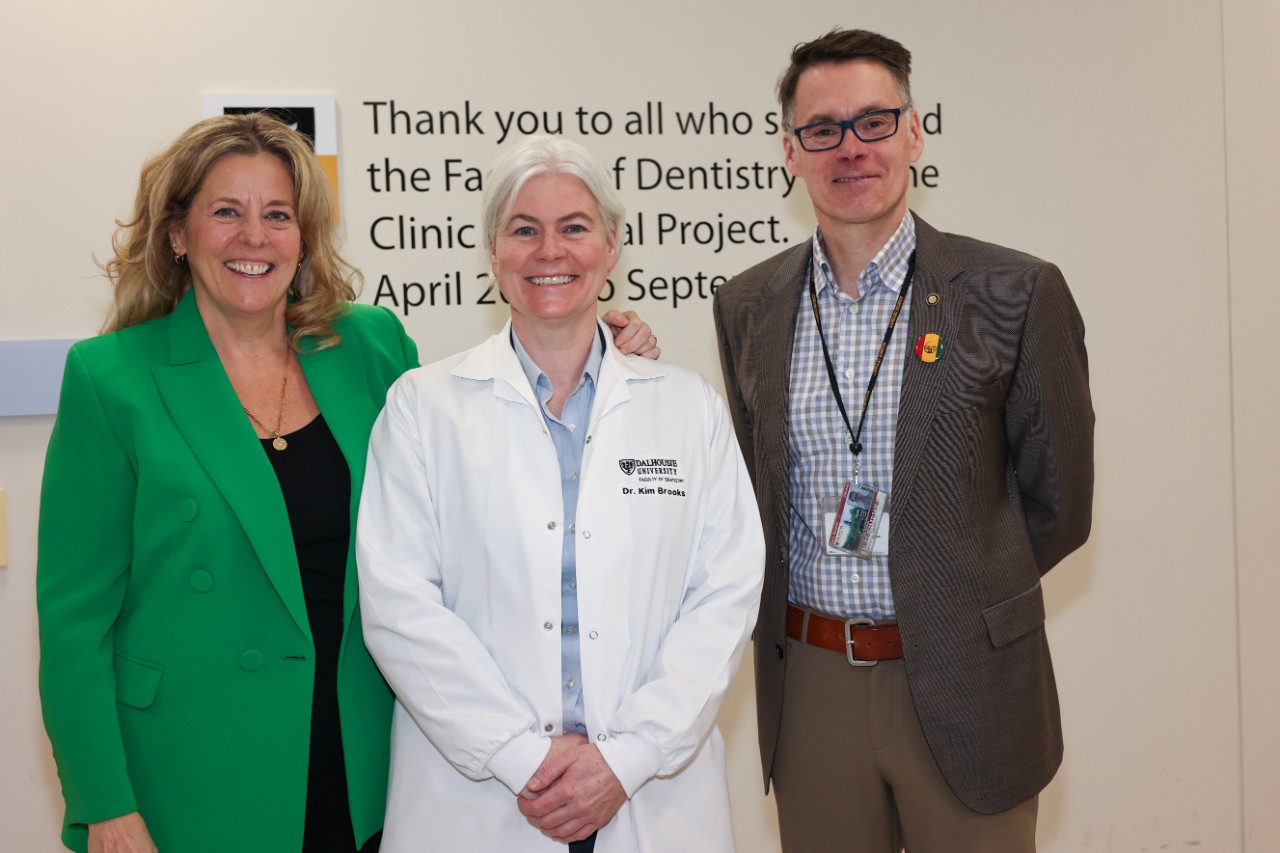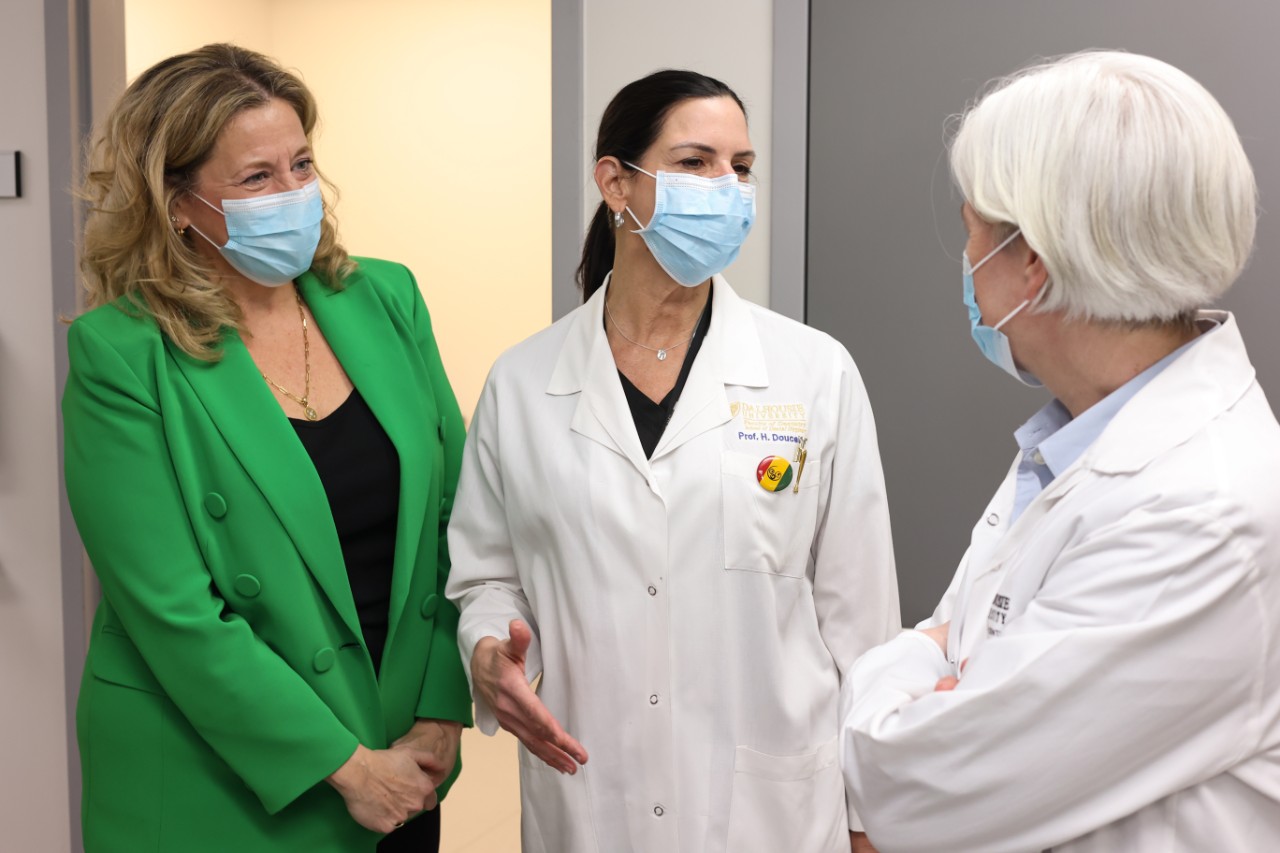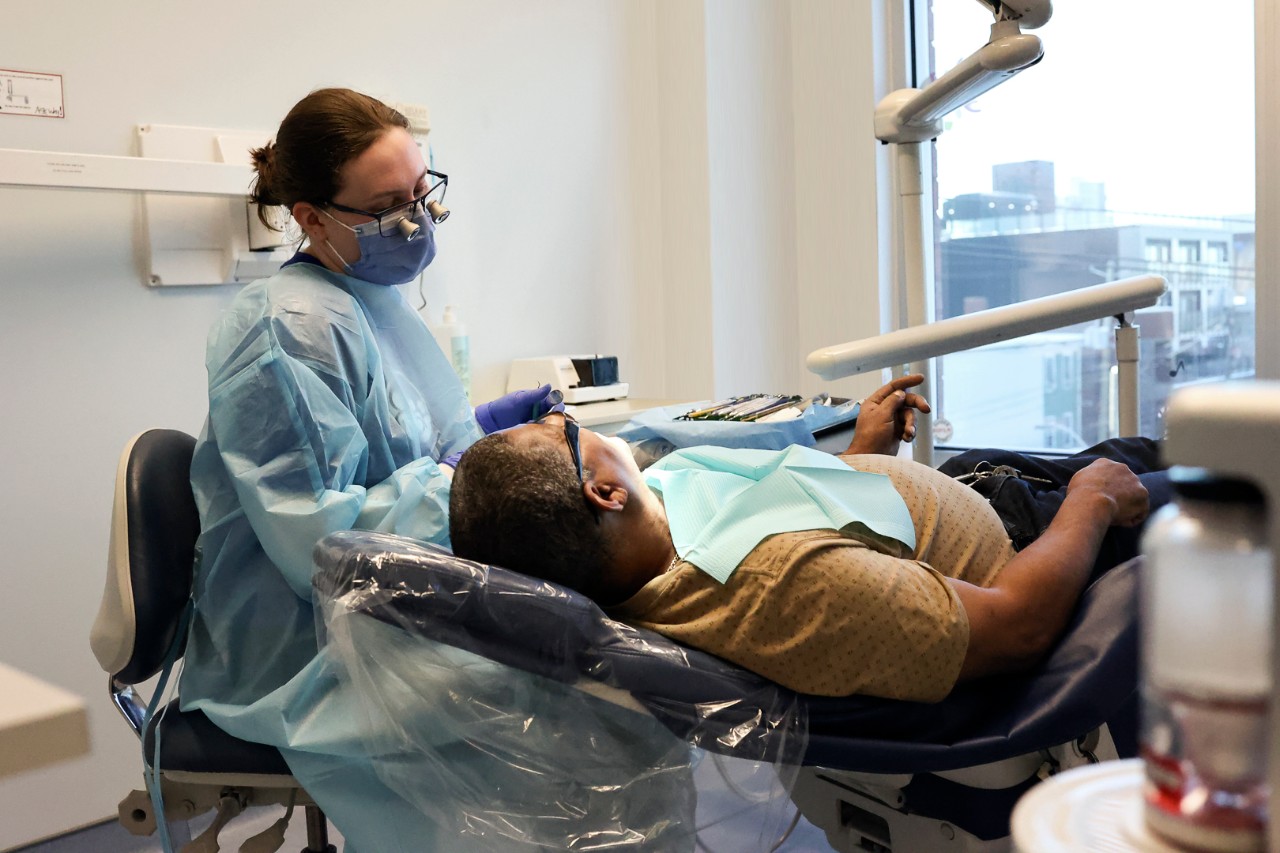 Susan Keating-Bekkers (left), President Kim Brooks and Dean Ben Davis. (Bruce Bottomley photo)
Susan Keating-Bekkers (left), President Kim Brooks and Dean Ben Davis. (Bruce Bottomley photo)
Posted: May 16, 2024
By: Mark Campbell
For Giving Power
Dalhousie President Dr. Kim Brooks toured the Government Assisted Populations (GAP) Oral Health Clinic with Dal alum, past faculty, volunteer, and donor Susan Keating-Bekkers. The clinic serves new Canadians, many of whom have not had consistent access to oral health care.
It’s a Monday evening in February, and Dalhousie President Dr. Kim Brooks is taking her first-ever tour of the Faculty of Dentistry’s Government Assisted Populations (GAP) Oral Health Clinic.
She is here on a busy night for the donor-supported clinic. There are 40 patients who need to be seen for dental hygiene care, fillings, extractions, or for their first-ever dental exams. Although their needs are different, these patients have one thing in common: they’re all newcomers to Nova Scotia.
“I’ve heard a lot about the clinic, but seeing what it does is really eye opening,” says Dr. Brooks. “I’m struck by the difference that faculty and students are making through the services and support they provide. They’re meeting urgent needs that would otherwise not be met.”
Filling a gap
For more than a decade, the GAP Clinic has partnered with the Immigrant Services Association of Nova Scotia to deliver oral care to hundreds of new immigrants. Its operations are supported in part by dentistry and dental hygiene students and faculty. Dalhousie alum, past faculty member, and volunteer Susan Keating-Bekkers (DDH’91) has worked with Dalhousie to create philanthropic funds to support this clinic, making it sustainable for many years to come.
“Newcomers often have dental needs and limited support for services,” she says. “Dalhousie’s GAP clinic fills that gap by providing access to dental care. Providing funding to keep this clinic running is my way to help.”
 Susan Keating-Bekkers (left), Professor Heather Doucette and President Kim Brooks connect during a tour of the GAP Clinic. (Bruce Bottomley photo)
Susan Keating-Bekkers (left), Professor Heather Doucette and President Kim Brooks connect during a tour of the GAP Clinic. (Bruce Bottomley photo)
A gift with impact
According to Heather Doucette (DDH’94, BSc’03), associate professor and director of the GAP clinic, many of the patients they see have higher rates of oral disease or require more extensive treatment than most Canadians. That’s because very few of these patients, if any, received dental care before arriving in Nova Scotia. The majority have also faced financial and language barriers getting care as newcomers.
“Their first exam can take all evening, and we usually see them for several dental hygiene appointments before we can start to focus on dental treatment,” says Doucette. “We may see a patient for the first time in September and they are still coming back to us in the spring for care.”
Thanks to Keating-Bekkers’ support, the GAP clinic has been able to provide oral care to 925 patients since 2017. Although removing the barrier of cost makes a huge difference for accessibility among newcomers, it also helps that there are both student and professional interpreters on hand to break down language barriers. “The ability to have the care you’re receiving explained to you in your own language is important, especially in a setting like this where someone may be very apprehensive,” Keating-Bekkers says. “That creates a space that is safe and welcoming.”
Preparing students to serve the community
In addition to removing barriers to care for immigrants, the GAP clinic creates opportunities for both dental hygiene and dentistry students to gain valuable clinical experience. For example, dentistry students have hands-on opportunities to build competence and confidence in meeting a wide range of dental needs, such as fillings and extractions. But even more importantly, students can provide care across a wide range of languages and cultures—vital preparation for serving the community when they graduate.
“Think about how those interactions change who these students are and what they care about,” Dr. Brooks says. “It enables them to think more about who their patients are and how they can communicate with them more effectively. That means better, more empathetic, and more inclusive care.”
Keating-Bekkers agrees. “I really hope that the students come away with a strong desire to treat marginalized populations,” she says. “It certainly has been rewarding for me.”
